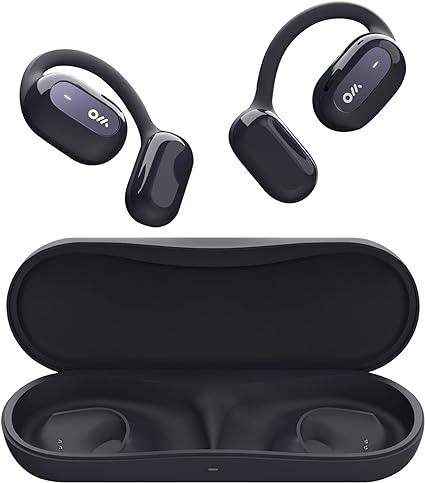The Difference Between Moving Iron Earphones and Moving Coil Earphones
In ordinary conversations, you may often hear people mention “moving coil” and “moving iron” when discussing earphones. Although I don’t know the specific meaning of these terms, I can glean some understanding from the context. For example, moving coil headphones are praised for their full low frequencies, warm sound, and expansive sound field, while moving iron headphones are noted for their good resolution, relatively dry (cold) sound, and higher price. However, this can confuse novice users who wonder, “What’s the big deal about buying a headset?”
In reality, the mysteries surrounding these types of earphones lie primarily in their units. Despite being no larger than a slap (the size of a finger’s belly), there’s a wealth of knowledge within them. The terms “moving coil” and “moving iron” refer to the unit of the earphone, which is a key component directly influencing the sound characteristics. It determines whether the earphone is suitable for listening to pop, jazz, vocals, rock, etc. Therefore, it’s essential to have a basic understanding of moving coil and moving iron units to make informed choices when purchasing headphones. Today, let’s delve into the differences between moving coil and moving iron.
Preliminary Understanding of Moving Coil and Moving Iron Units
Cost Difference:
Dynamic earphones, which are predominantly used in the market, are generally equipped with dynamic units. These earphones, whether head-mounted or earplugs, usually come with dynamic units. The price of dynamic earphones is typically relatively affordable (though there are exceptions), as the cost of moving coil units can be kept low. Merchants rely on volume sales, ensuring profitability. In contrast, the cost of moving iron units is notably higher.
Size Difference:
The earphones we commonly use feature dynamic units, including various speaker types on the market, which also employ moving coil units. These units can be made quite small; earphones typically utilize moving coil units with diameters of 9mm or 13.5mm, suitable for insertion into the ear canal. For instance, the Audio-Technica ATH-CKN50 in-ear headphones employ a micro-moving coil unit with a diameter of only 5.7mm, making them smaller, lighter, and more comfortable to wear. Moving iron units, on the other hand, are even smaller, approximately the size of a grain of rice. Encased in silicone earplugs, they can be easily inserted deep into the ear canal, thus, moving iron earphones are typically in-ear.
Operating Principle:
Sound is generated by vibration. To produce sound, there must be a source of vibration (object). In the moving coil unit, the film inside the earphone serves as the vibration source. This film, attached with a conductive coil, generates a magnetic field when a current flows through the coil. The magnetic field interacts with the permanent magnet material, causing the film to vibrate and produce sound. On the other hand, in the moving iron unit, vibration and sound are generated by transmitting to the center point of a micro-diaphragm through a precisely structured connecting rod. There are some differences in the operating principles of the two units.
Further Exploration of Moving Coil/Moving Iron Earphones
Moving Coil Unit Characteristics:
Dynamic earphones come in various forms, primarily open, semi-open, and closed types. Open-type earphones, due to their larger dynamic coil unit area and the involvement of space and air in vibration during sound production, have limited control over sound leakage and provide no isolation from the external environment. However, they offer a natural auditory experience with a large sound field and are comfortable to wear. In contrast, the moving iron unit of in-ear earphones, being small in size and designed for deep insertion into the ear canal, provides better sound insulation and is suitable for listening in outdoor environments.
Moving Iron Unit Features:
Moving iron earphones feature small units that can be easily inserted deep into the ear canal, providing a closed structure. They can also be designed as multi-unit earphones, offering high sensitivity, transient performance, and analytical capabilities superior to dynamic earphones. However, due to their sealed design and smaller size, even high-end moving iron earphones do not match the open-back dynamic earphones in terms of sound field.
Frequency Response Curve:
The vibrating diaphragm of the moving coil headphone unit is generally bonded to the conducting coil through glue, resulting in individual differences among units and potential audible changes due to environmental factors like temperature and humidity. In contrast, moving iron units are made of metal materials using high-precision molds, resulting in a more stable frequency response curve and overall sound quality performance.
Analysis of Sound Characteristics of Moving Coil/Moving Iron Earphones
Comparison of Moving Coil/Moving Iron Units:
While sound characteristics can be subjective, comparing moving coil and moving iron headphones using audio parameters reveals distinct differences. Moving iron units, being small and closed, require less current to drive, resulting in high spiritual density even at low volumes, making them ideal for noisy environments. Dynamic headphones, on the other hand, offer smoother and more natural frequency connections but lack the compactness of sound provided by moving iron earphones.
Sound Field:
Dynamic headphones excel in creating a wide sound field, enhancing the overall atmosphere and envelopment of the music. Moving iron earphones, due to their smaller size and sealed structure, have a narrower sound field and lack the expansive scene provided by dynamic headphones. Despite this, multi-unit moving iron earphones compensate for the single-unit frequency response range, albeit at a higher price due to the need for frequency dividers to manage multiple units.

